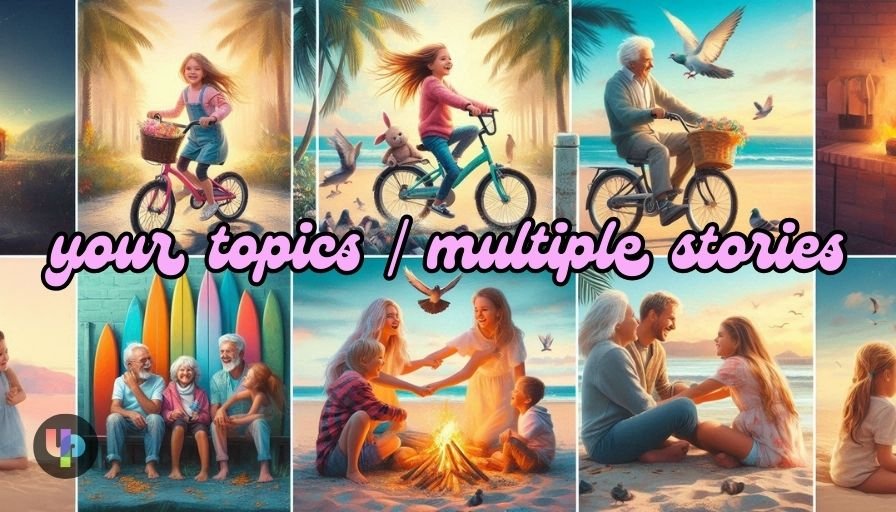In a world saturated with content, the concept of “Your Topics | Multiple Stories” offers an engaging and innovative approach to storytelling. This method weaves diverse perspectives and narratives around a central theme, creating a multifaceted experience for audiences. Whether used in education, marketing, or entertainment, this approach not only informs but also captivates, making complex topics accessible and relatable. Here’s a deep dive into how this strategy works, its applications, and why it resonates so strongly in today’s digital age.
Table of Contents
ToggleWhat Is “Your Topics | Multiple Stories”?
At its core, “Your Topics | Multiple Stories” involves presenting a topic through various angles and narratives. Unlike traditional linear storytelling, this approach encourages:
- Diverse Perspectives: Incorporating viewpoints from different individuals or contexts.
- Engaging Formats: Using multiple media types, such as text, visuals, and video.
- Layered Storytelling: Building a richer understanding by connecting multiple stories around a single theme.
For example, in tech journalism, an article about AI advancements might include interviews with developers, user testimonials, and expert analyses, creating a comprehensive yet dynamic exploration of the topic.
Key Features of the Approach
1. Customizability:
-
- Readers or users can choose the stories that resonate with them, ensuring a personalized experience.
- This makes it ideal for platforms that cater to diverse audiences with varying interests.
2. Community Engagement:
-
- Content often includes user-generated stories, fostering emotional connections and a sense of participation.
3. Comprehensive Learning:
-
- By addressing multiple facets of a topic, this method breaks down complex subjects, making them easier to understand.
Applications Across Domains
1. Marketing and Branding
- Narrative Diversity: Companies use multiple narratives to showcase product benefits from different perspectives, such as customer stories, behind-the-scenes production, and expert endorsements.
- Enhanced Emotional Connection: For example, a beauty brand might share a customer’s transformation story alongside details about the product’s ingredients and sustainability practices. This creates a holistic brand narrative.
2. Education
- Dynamic Content Delivery: Educational platforms leverage this approach to explain complex subjects. By incorporating scientific data, historical anecdotes, and practical applications, topics like climate change or physics become relatable.
- Encouraging Critical Thinking: Multiple viewpoints encourage students to analyze and synthesize information, fostering deeper learning.
3. Entertainment
- Interwoven Plotlines: Popular in literature and media, interweaving multiple plotlines keeps audiences engaged while exploring complex character arcs and themes.
- Interactive Experiences: Gaming and virtual reality experiences use layered storytelling to immerse users in rich, interactive narratives.
4. Social Media
- Platforms like Instagram use features like story takeovers and collaborative storytelling to amplify voices. Influencer collaborations bring fresh perspectives while expanding audience reach.
Techniques for Implementing “Multiple Stories”

1. Interweaving Narratives
- Start with a central theme and build subplots that connect seamlessly. Use shared events or objects to tie narratives together.
2. Character Development Across Stories
- Develop well-rounded characters that evolve consistently across narratives. This approach ensures each subplot enriches the main story.
3. Experimentation with Formats
- Use diverse media formats such as videos, infographics, or live sessions to cater to different preferences and make the content more dynamic.
4. Curated Storytelling
- Organize stories to ensure they complement rather than repeat each other, creating a cohesive yet layered experience.
Why “Your Topics | Multiple Stories” Matters
1. Better Audience Engagement
- Modern audiences, with their shorter attention spans, prefer varied, bite-sized content. Multiple stories offer quick yet in-depth engagement.
2. Relatability and Empathy
- Stories from diverse perspectives foster empathy and understanding, allowing audiences to connect with content on a personal level.
3. Building Trust
- By showcasing authenticity through user-generated stories and expert opinions, this approach builds credibility and trust among audiences.
4. Enhanced Retention
- Engaging storytelling increases the likelihood of audiences retaining information, making it a powerful tool for both marketing and education.
Challenges and Solutions
Challenge 1: Balancing depth with simplicity.
- Solution: Use clear, concise language and visuals to break down complex ideas.
Challenge 2: Avoiding disjointed narratives.
- Solution: Plan connections between stories and ensure thematic alignment.
Challenge 3: Maintaining audience interest across multiple narratives.
- Solution: Balance the pacing of each story and intersperse high-impact moments to sustain engagement.
The Future of Storytelling with “Your Topics | Multiple Stories”
As the digital landscape evolves, the demand for engaging and versatile content grows. This storytelling method aligns perfectly with modern consumption habits, offering depth without overwhelming audiences. Its adaptability across fields ensures its relevance, making it a cornerstone for future content strategies.
